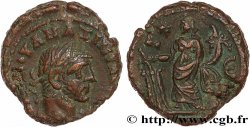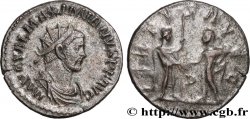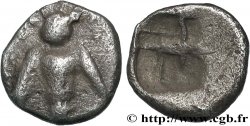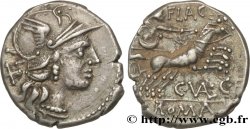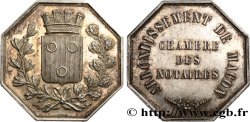v23_0610 - MAXIMIANUS HERCULIUS Aurelianus
MONNAIES 23 (2004)
Starting price : 100.00 €
Estimate : 150.00 €
Realised price : 100.00 €
Number of bids : 1
Maximum bid : 220.00 €
Starting price : 100.00 €
Estimate : 150.00 €
Realised price : 100.00 €
Number of bids : 1
Maximum bid : 220.00 €
Type : Aurelianus
Date: 293
Mint name / Town : Asie, Cyzique
Metal : billon
Millesimal fineness : 50 ‰
Diameter : 21 mm
Orientation dies : 7 h.
Weight : 3,62 g.
Rarity : R1
Officine: 5e
Emission: 1re
Coments on the condition:
Magnifique exemplaire avec une patine marron foncé et des reflets métalliques. Portrait réaliste. Revers de haut relief. Pièce ayant conservé son coupant d’origine
Predigree :
Cet exemplaire provient de MONNAIES XIII, 30 juillet 2001, n° 1006
Obverse
Obverse legend : IMP C M A MAXIMIANVS AVG.
Obverse description : Buste radié, drapé et cuirassé de Maximien Hercule à droite, vu de trois quarts en arrière (A2).
Obverse translation : “Imperator Cæsar Marcus Aurelius Maximianus Augustus, (L’empereur césar Marc Aurèle Maximien auguste).
Reverse
Reverse legend : CONCORDIA MI-LITVM/ E//XXI.
Reverse description : Maximien Hercule et Jupiter debout face à face ; Maximien debout à gauche, tourné à droite, vêtu militairement, tenant de la main gauche un parazonium, et recevant un globe nicéphore de Jupiter nu, debout à droite, tourné à gauche, le manteau sur l'épaule gauche et appuyé sur un sceptre de la main gauche.
Reverse translation : “Concordia Militum”, (La Concorde des soldats).








 Report a mistake
Report a mistake Print the page
Print the page Share my selection
Share my selection Ask a question
Ask a question Consign / sell
Consign / sell
 Full data
Full data